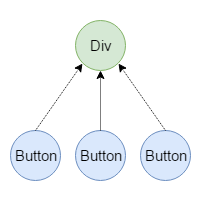One of the most common tasks a web developer deals with is to add event listeners to the elements of a page. Event listeners are employed to perform one or more actions when a given event occurs on one or more elements.
For example, by using an event listener we could display a dialog when a button is clicked by a user. In this case, the developer is running a single action (showing the dialog) when a click event occurs on one element (the button). Another example is a pagination widget. The latter is made of many links that have to lead the user to a given page when clicked. Here, the developer is performing the same, single action on many elements. The final example I want to mention is to use an event listener with elements that don’t yet exist in the page but will. This happens when injecting elements in the web page after an Ajax request is performed.
In this article, I’ll discuss how you, as a web developer, can optimize the addition of event listeners in all these situations by employing a technique called event delegation.




